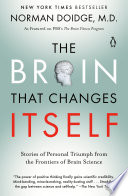Summary Link to heading
The Brain That Changes Itself by Norman Doidge is a compelling exploration of neuroplasticity—the brain’s incredible ability to change and adapt even into adulthood. Through a series of case studies and stories, Doidge illustrates how brain function can be altered with practice, training, and, in some cases, innovative therapeutic techniques. The book covers a range of topics from stroke recovery and learning disabilities to the impacts of mental exercises and the potential for rehabilitation in neurological disorders. Doidge brings to light the transformative impact of neuroplasticity on personal development and healing.
Review Link to heading
Norman Doidge’s book has been praised for making complex scientific concepts accessible to a general audience, balancing scientific rigor with engaging narrative storytelling. The strength of the book lies in its vivid stories of personal triumph and the optimism it provides regarding the brain’s potential for change. However, some critiques point to an over-emphasis on anecdotal evidence over empirical data, suggesting a need for a more balanced perspective on the limitations of neuroplasticity. Overall, the book is celebrated for sparking greater interest and awareness in neuroscience.
Key Takeaways Link to heading
- Neuroplasticity’s Power: The brain is not static; it can reorganize itself by forming new neural connections throughout life.
- Therapeutic Interventions: Innovative therapies can help individuals recover from significant neurological impairments.
- Personal Growth: Engaging in new and challenging activities can physically change brain structure and function.
- Limitless Learning: Age does not significantly restrict the ability to learn new skills or concepts due to the brain’s plasticity.
- Individual Stories: Personal experiences and case studies reveal the emotional and practical impacts of neuroplasticity in real-life scenarios.
Recommendation Link to heading
The Brain That Changes Itself is particularly recommended for readers interested in neuroscience, psychology, and personal growth. It is an excellent choice for those looking to understand the potential of the human brain beyond traditional limitations. Healthcare professionals, educators, and anyone interested in self-improvement and rehabilitation can greatly benefit from the insights provided in this book.
